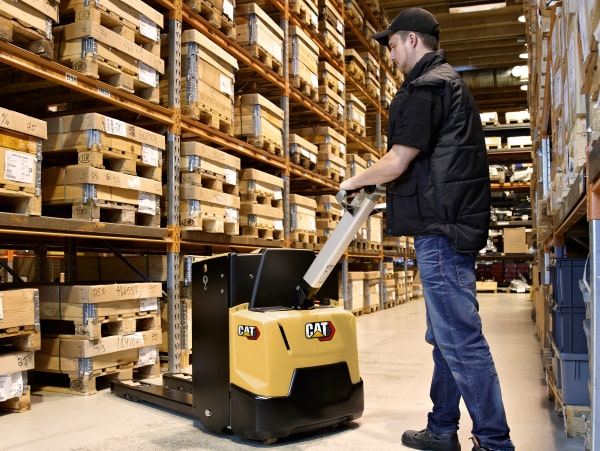 Danny Maron, owner/trainer of Ideal Forklift Training in Canada’s national capital, is an independent consultant, providing the education lift truck operators require, to businesses and government, to minimise the chance of incidents in the workplace. Before founding Ideal in 2000, Danny was a trainer at Canada’s largest forklift dealer.
Danny Maron, owner/trainer of Ideal Forklift Training in Canada’s national capital, is an independent consultant, providing the education lift truck operators require, to businesses and government, to minimise the chance of incidents in the workplace. Before founding Ideal in 2000, Danny was a trainer at Canada’s largest forklift dealer.
Power pallet trucks. There are power walkies, walkie stackers, walkie reach trucks. Small workhorses that pack a potential punch. Capacities as low as 1,000 lb. - and up to 4500 lb., in certain cases, greater than some stand-up and sit-down forklifts. And some of these trucks can weigh as much as 12,000 lb. fully loaded, which is as much as a compact car.
So, there are two items that baffle me. The first: why do so many employers overlook the necessity of having their staff trained on these mini-mites? According to the lawbooks, all individuals operating powered industrial lift trucks must be trained and deemed competent.
The regulations do not mention anything about size, weight or capacities or even styles, for that matter. Many employers are unaware that these little lift trucks require safety training. Looks like my manual pump truck, except a wee bit bigger in some cases, and if they can operate a manual truck, why the need to be trained on these trucks just because they have a motor?
 Pallet jacks seem innocuous enough
Pallet jacks seem innocuous enough
Answer is simple: it’s the law. No questions asked. But why isn’t the law catching up with these people? Your guess is as good as mine. Many times, the officers do not even see these guys in the warehouse or choose to ignore them.
I have been trying to figure this one out for over 20 years with no reasonable answer.
The second item that makes me angry is the reversing switch on these walkies. You know, that red button at the butt end of the control handle. It is there so the operator does not get pinned between the walkie and a stationary object. And why do they have these buttons on each and every walkie? The answer is because people are not necessarily the brightest living organisms on the planet.
The walkie is considered travelling in the forward direction when the operator is leading along with the power unit and the forks are tailing way behind the operator; travelling in the reverse direction is when the operator is ‘pushing’ the walkie like a baby carriage.
So, how does an operator get trapped between the truck and a stationary object such as a wall, rack, inventory or heavy piece of machinery? By walking backwards while the truck is travelling forwards. I’ll repeat that once again: the operator walking backwards while the truck is travelling in the forward direction. I have yet to meet anyone who owns a second pair of eyes in the back of their heads. Have you?
So when they are travelling with a load, eyeing the load instead of the direction of travel, bam! They get pinned. Ouch! But hold on. There is a reversing switch that saves the operator from getting crushed. The red button hits the operator in the stomach/belt area and the truck travels away from the operator, preventing any harm to that operator. A great idea but when training, regardless of the class of lift truck, operators should always be taught to travel in the direction of best visibility and always look in the direction of travel. So why are these operators travelling forwards and looking in reverse? It’s as if you were driving your car, let us say south on a road and looking in your rear window facing north. Makes sense? Not to me as a trainer. It doesn’t and shouldn’t make sense to anyone with an IQ over 30. So why do operators do this sort of thing? Maybe bad habit, untrained, ignorance. Who knows?
My solution is to get rid of that red button altogether and let the operators get squeezed by the pallet truck and keel over in pain for an hour and then learn their lesson to never drive the truck forwards while walking backwards, looking at the load. A painful lesson, but one of common sense.